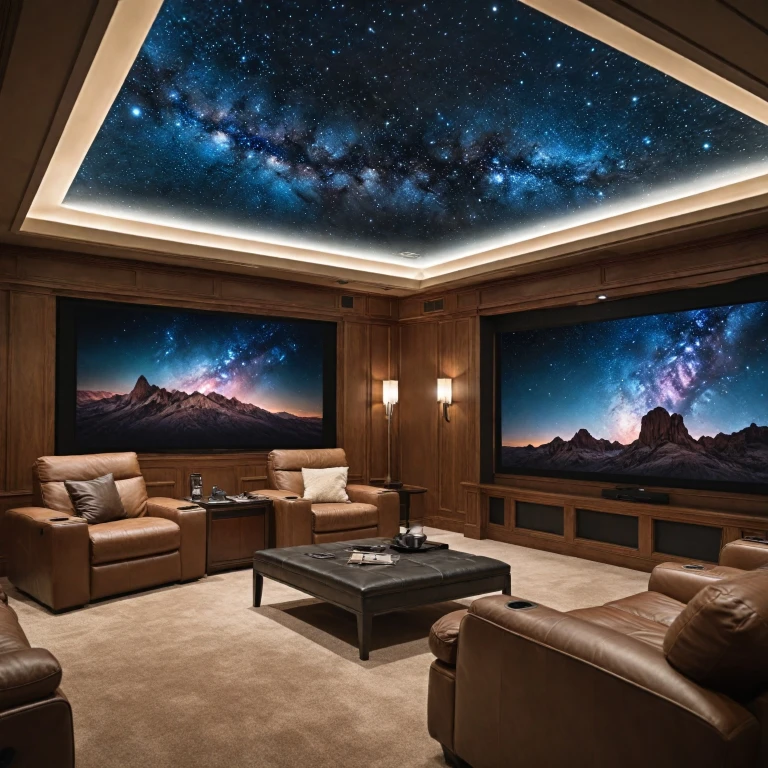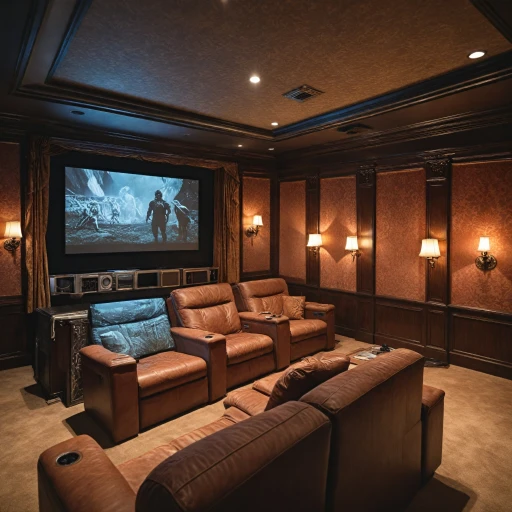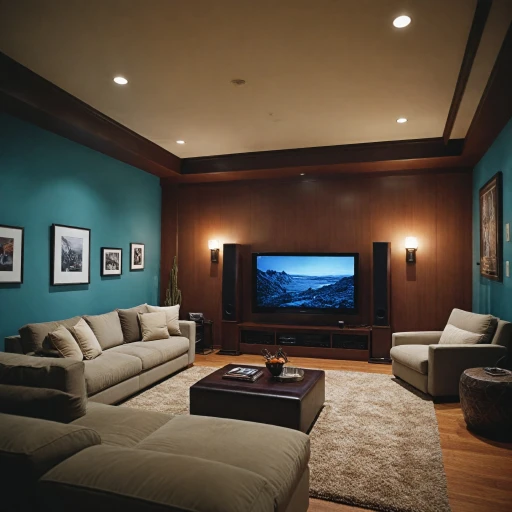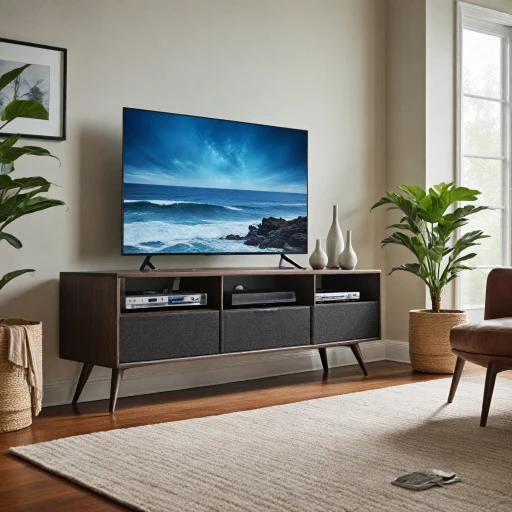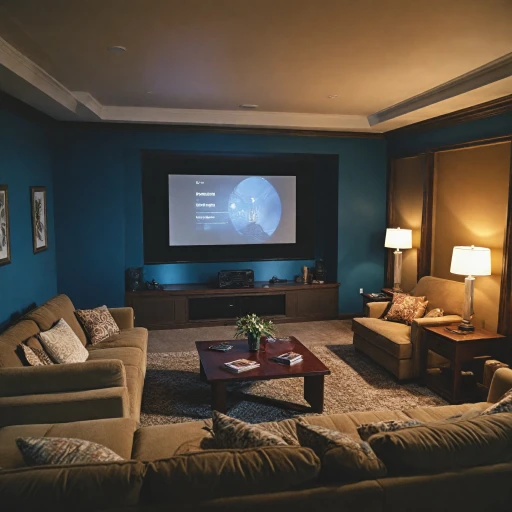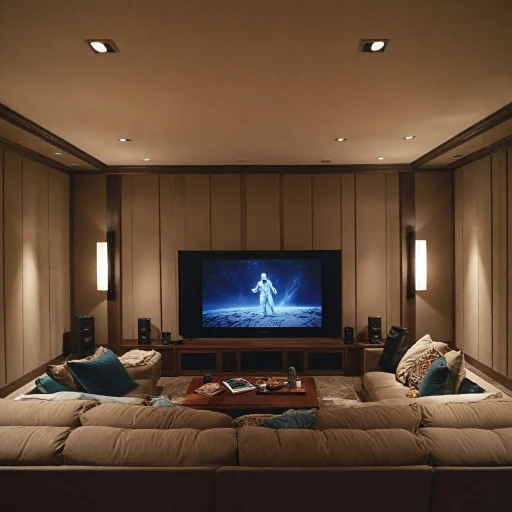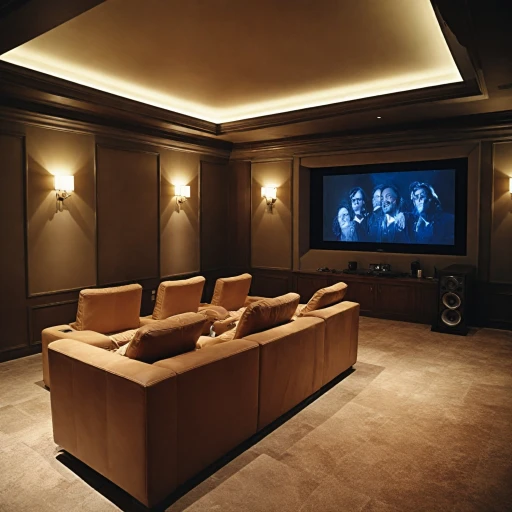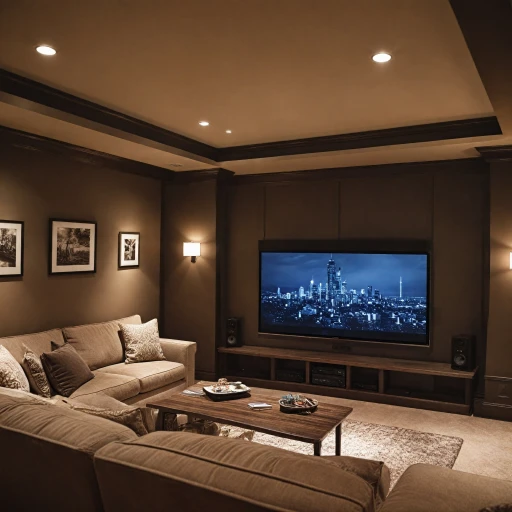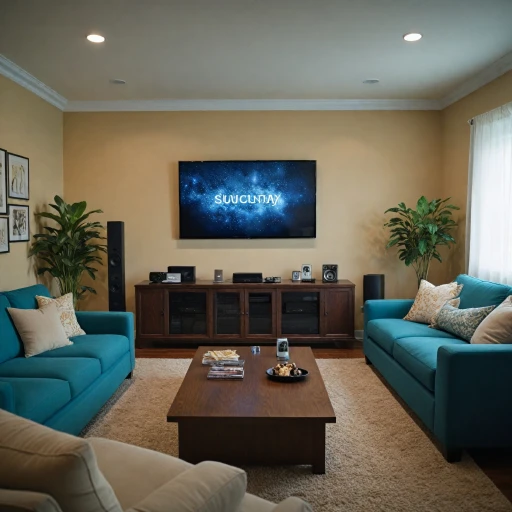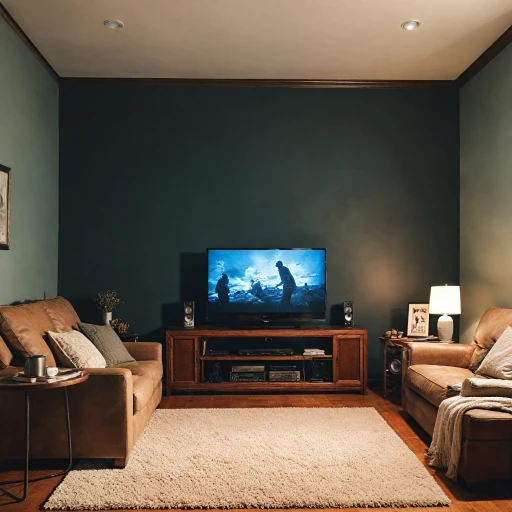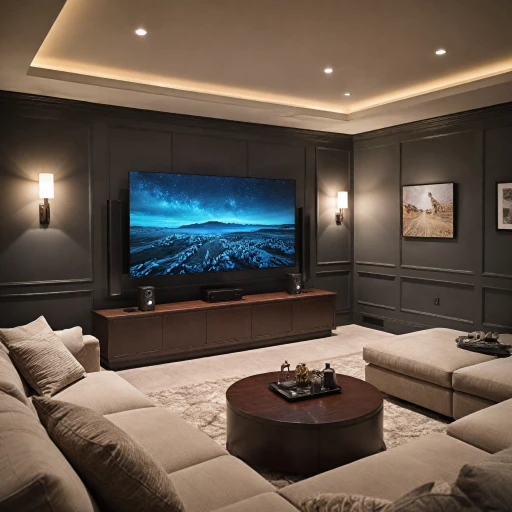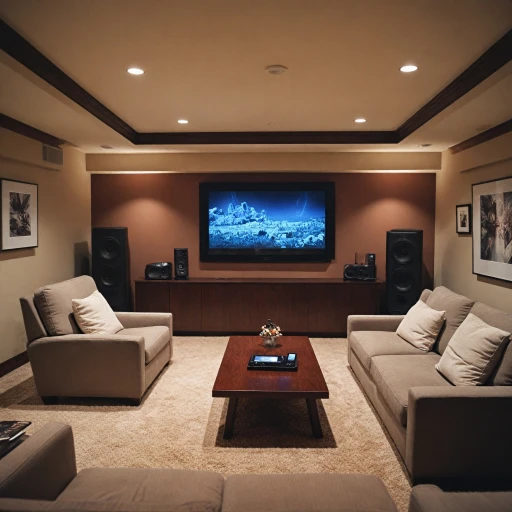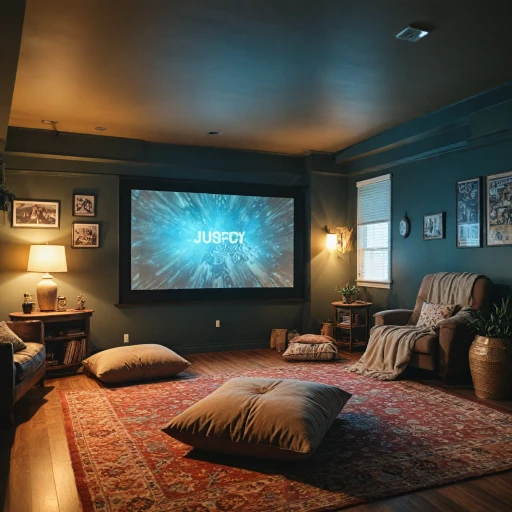
Understanding Dolby Atmos Technology
Exploring the Atmos-pheric Shifts in Technology
In the domain of home theater systems, Dolby Atmos technology has emerged as a game-changer. This advanced audio format elevates the typical surround sound experience by introducing overhead audio channels, allowing for a more immersive soundscape that envelops the listener from all directions. Unlike traditional systems that operate on a horizontal plane, Dolby Atmos adds a vertical dimension, providing depth and realism to the sound environment.
The Impact on Audio Systems
Dolby Atmos technology requires specialized equipment to perform at its best. This includes a Dolby Atmos-enabled receiver with support for object-based audio and available channels to accommodate height speakers. Popular choices include the Denon AVR and Sony STR series, renowned for their capability to handle high-fidelity sound and integrate seamlessly with existing home theater systems.
Creating an Immersive Experience
HDR Dolby Vision compatibility and DTS support further enhance the quality of audio and video. HDMI inputs and eARC HDMI features ensure that the highest sound quality is maintained, while the theater receiver works in tandem with speakers to maximize the audio effects. Whether it's an Onkyo or another brand, selecting an atmos receiver that aligns with your specific needs is crucial to harnessing the full potential of this technology.
Broadening Entertainment Horizons
With the advancements in streaming services offering Dolby Atmos content, it's easier than ever to enjoy cinema-quality sound at home. Future-proofing your system with an AVR that supports HDR Dolby Vision and Atmos will enhance your home theater setup, providing an audio-visual experience that matches IMAX Enhanced standards. For further improvement, integrate a Vizio sound bar to complement the system.
Choosing the Right Dolby Atmos Receiver
Selecting the Ideal Receiver for an Immersive Experience
When you're determined to get the most out of Dolby Atmos technology, selecting the right receiver is crucial. With several options on the market, from brands like Denon, Onkyo, and Sony, the task can feel overwhelming. Here are some key aspects to consider to ensure you're making the best choice for your home theater setup.
- Audio Channels and Power: A channel receiver defines how many speakers you can connect. For a true Dolby Atmos experience, look for a receiver that supports at least 5.1.2 channel configurations. This setup includes five traditional surround speakers, one subwoofer, and two ceiling or up-firing speakers for those overhead effects. Ensure the receiver has enough power to drive your chosen speakers efficiently.
- Dolby and DTS Support: Opt for a receiver that supports both Dolby Atmos and DTS:X formats. This flexibility ensures access to the best sound quality and maximizes the content available through various streaming services. Many high-end receivers, like the Denon AVR series, also offer IMAX Enhanced certification for superior audio-visual performance.
- HDMI Inputs and Video Capabilities: Your receiver should have multiple hdmi inputs to handle various devices, such as gaming consoles and media players. Moreover, ensure it supports HDR formats, including HDR10 and Dolby Vision, for exceptional video and visual quality. Receivers that come with eARC HDMI ports can transmit high-quality audio formats more efficiently.
- Wireless Connectivity: Connectivity options like bluetooth are invaluable for streaming audio directly from your devices. Some theater receivers also offer Wi-Fi capabilities, enhancing seamless integration with smart home systems and control via mobile apps.
Choosing the right receiver is a step towards enhancing your home theater system and enjoying a cinematic experience right in your living room. Investing in a sound receiver like the Denon AVR can drastically elevate your audio experience, providing the ultimate surround sound setup for your home theater.
Integrating a Dolby Atmos Receiver with Your Projector
Integrating Your Projector for Optimal Atmos Experience
To ensure the best audio-visual experience in your home theater, it's crucial to integrate your Dolby Atmos receiver with the projector seamlessly. Here are some steps to maximize sound quality and video clarity: First, assess your home theater equipment, especially the HDMI capabilities of your projector and receiver. Most modern Dolby Atmos receivers like those from brands such as Denon, Onkyo, and Sony STR come equipped with multiple HDMI inputs that support high-definition video formats, including HDR and Dolby Vision. Make sure your projector is compatible with these formats to fully experience the stunning visual depth these technologies offer. When connecting your devices, utilize high-quality HDMI cables that can carry both video and sound to ensure synchrony. Additionally, if your receiver supports eARC HDMI, enable this feature to reduce audio latency and enhance sound channeling from your streaming services. For audio clarity, route all sound through the receiver, ensuring all connected devices transmit their audio signals correctly. This strategy prevents unwanted sound lag which can occur when sound is processed separately from video. If you're inclined to future-proof your setup, consider investing in a projector with Bluetooth capabilities. This will enable flexible connectivity with other wireless audio solutions. For readers interested in enhancing their setup, explore this enhance your viewing experience with Da-Lite screens blog for insights on display options. These steps can transform your home theater into a technical marvel, delivering unparalleled surround sound audio and sharp visuals for an immersive cinematic atmosphere.Optimizing Speaker Placement for Dolby Atmos
Strategic Speaker Arrangement for Superior Sound
Achieving the most immersive Dolby Atmos audio experience requires meticulous consideration of speaker placement. Unlike traditional surround sound setups that rely primarily on horizontal speaker arrangements, a Dolby Atmos setup utilizes height channels to create an enveloping audio environment. This unique configuration delivers sound from above, making the audio experience truly three-dimensional.
When setting up your home theater speakers, begin with the standard 5.1 or 7.1 channel system and then add height speakers. Here are some key points to consider for optimal sound quality:
- Dedicated Ceiling Speakers: If possible, install ceiling-mounted speakers for a precise overhead sound field which is crucial for Dolby Atmos soundtracks.
- Upfiring Modules: If ceiling speakers aren't an option, you can use upward-firing modules that sit on your front and rear speakers to bounce sound off the ceiling.
- Speaker Adjustment: Ensure your AVR (Audio/Video Receiver), such as a Denon AVR or an Onkyo theater receiver, supports your chosen speaker configuration and adjust the settings accordingly. Leverage features like eARC HDMI for high-quality audio passthrough.
- HDMI Inputs: Utilize available HDMI inputs on your receiver to connect your sound sources for seamless audio and video transfer. It supports formats like Dolby Vision, IMAX Enhanced, and others, enhancing overall sound and picture quality.
While the placement of speakers is a critical component, integrating them with your Dolby Atmos receiver can yield exceptional surround sound effects. Select a channel receiver that best matches your setup, like the ever-reliable Sony STR or Denon, to ensure future-proofing against the latest audio and video formats. By optimizing these factors, you guarantee a theater-like experience in your home, making the most of advanced technologies like Atmos DTS and HDR Dolby. Remember, Bluetooth connectivity and streaming services also extend the usability and flexibility of your setup, providing options beyond traditional HDMI connections.
Troubleshooting Common Dolby Atmos Setup Issues
Resolving Dolby Atmos Setup Challenges
Setting up a Dolby Atmos receiver in your home theater can significantly enhance your audio experience, but it can also present some technical challenges. It's important to ensure that every component, from your AVR to your HDMI connections, is correctly configured to fully enjoy the immersive sound environment Dolby Atmos offers.
A common issue that many encounter is improper configuration of the channels on their receiver. Most best receivers, like those from Denon and Onkyo, provide setup assistance, which can guide you through assigning the right channels for each speaker. Make sure your receiver is set to the correct mode for Dolby Atmos. Often, this entails ensuring your receiver supports the necessary audio formats, such as DTS:X and IMAX Enhanced.
Another typical problem is related to incorrect HDMI input setup. Ensure you are using high-speed HDMI cables that support eARC for seamless audio return from Dolby Vision content. It's also useful to verify that your HDMI inputs are correctly set to prioritize video and sound quality, ensuring there’s no lag between audio and video.
Blu-ray players and streaming services often provide different output settings, influencing how well they work with your theater receiver. Verify that they are configured to transmit Dolby Atmos audio to your receiver. Additionally, it’s worthwhile to check your on-screen audio settings, ensuring your on-screen menu confirms Atmos playback.
If Bluetooth connectivity is part of your setup, confirm that it’s properly paired and capable of transmitting the full audio range. Not all Bluetooth speakers will support the comprehensive surround sound offered by Dolby, so make sure your speakers have the appropriate specifications.
Sometimes, users encounter audio dropouts or inconsistencies. Testing each of your speaker connections and ensuring your AVR settings maximize channels power can be helpful in troubleshooting these issues. Also, remember that firmware updates are crucial for maintaining compatibility with new audio formats and receivers.
Future-Proofing Your Home Theater with Dolby Atmos
Keeping Your Setup Ahead with Dolby Atmos
As you embark on creating an impressive home theater system with Dolby Atmos, staying ahead of technological advancements assures a seamless viewing and listening experience. Future-proofing your setup involves a combination of understanding emerging audio standards, ensuring compatibility, and considering expandable features.Dolby Atmos, often provided through a channel receiver, boasts incredible sound quality, adding a third dimension with height channels that revolutionize traditional surround sound experiences. It's essential to choose the best receiver for your needs, considering options from reputable brands like Denon or Onkyo. These brands offer receivers equipped with the latest HDMI inputs, ensuring flawless audio and video transitions.
In today's streaming-centric world, ensuring your receiver supports the latest video standards such as HDR Dolby and Dolby Vision will guarantee compatibility with updated streaming services. Many top-tier models also support IMAX Enhanced or Dolby Atmos for the ultimate cinema-like experience right in your living room.
Incorporating eARC HDMI capabilities will keep your audio system compatible with future technology, facilitating better sound and video synchronization. Receivers like the Denon AVR or Sony STR often include such features, allowing you to enjoy the best of both audio and video worlds seamlessly. Bluetooth connectivity also adds the convenience of streaming from your mobile devices, adapting your system to the latest wireless trends.
Keeping your system's channels power in check with updates to accommodate additional speakers can also play a significant role, especially with advancements in DTS:X and other surround sound technologies. This ensures that your system has the flexibility to evolve with advancements in speaker technology.
In conclusion, investing in equipment that supports emerging standards ensures your home theater remains cutting-edge, delivering a breathtaking cinematic experience now and in the future. Remember, a well-rounded understanding paired with a thoughtfully chosen setup can keep your theater receiver ecosystem thriving for years to come.
